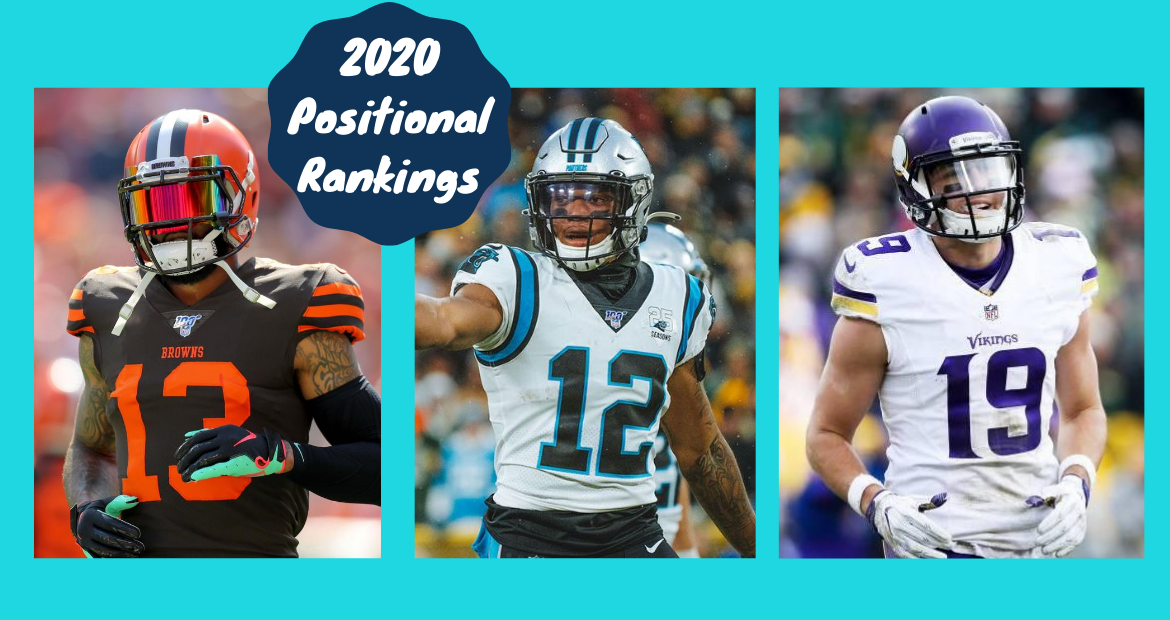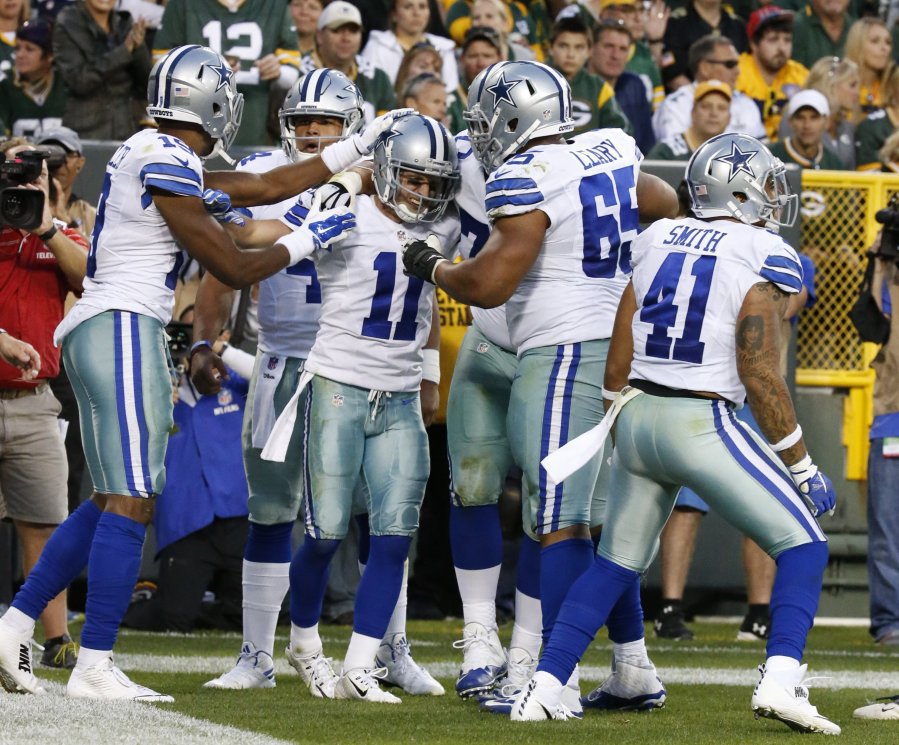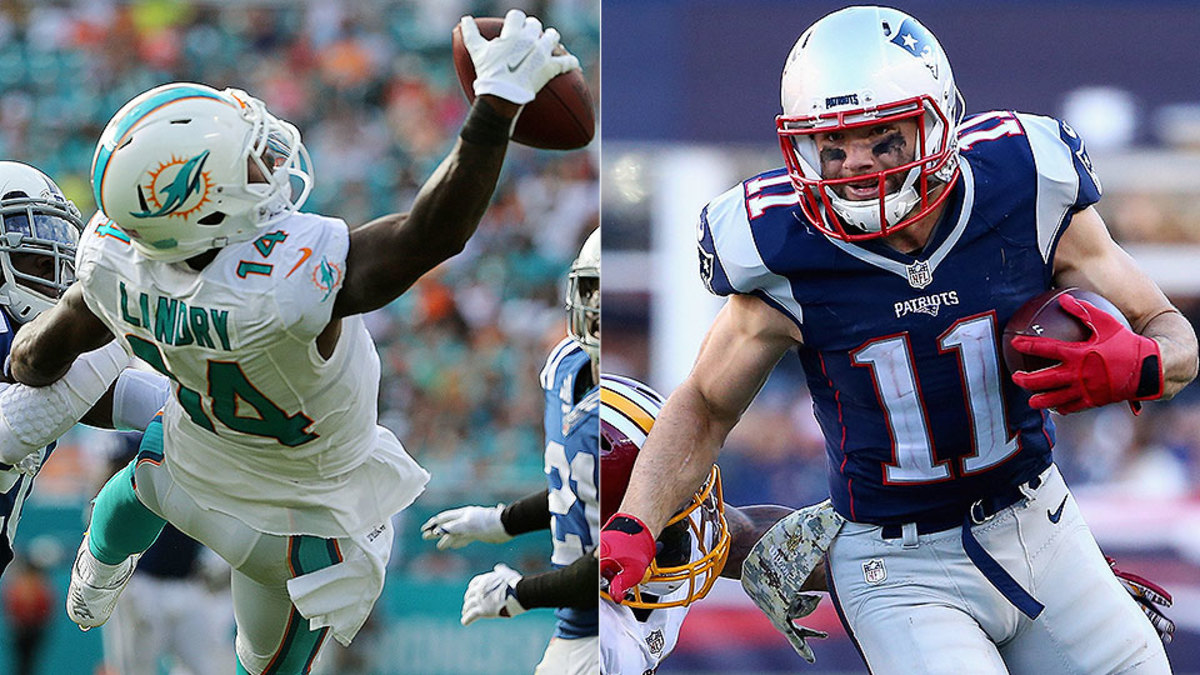Top Fantasy Slot Receivers
Posted By admin On 25/07/22For slot receivers, it was 11.63. So, over time and based on the play design and the makeup of the receivers, teams could find just that many more yards by throwing to their slot targets. The best slot receivers in the game bring unique and highly valuable traits to the game, and here are the best among them. Reliable' for fantasy football owners. Sure, he doesn't score a ton of touchdowns, but he doesn't need to. The last time Jones finished outside the top 8 in fantasy points for receivers was 2013 when he was injured. Last year, he ended up with 99 catches for 1,397 yards for six touchdowns. He's as safe of a pick as it gets.
In the 2019 regular and postseason, per Pro Football Focus data, slot receivers regardless of position (receivers, running backs, and tight ends) accounted for 32% of all targets, 31.6% of all receptions, 32.3% of all receiving yardage, and 34.3% of all receiving touchdowns. In a league where the three-receiver set is by far the default formation (it happened on 69% of all snaps last season, per Sports Info Solutions), having a versatile and productive slot receiver is an absolute necessity in the modern passing game.
Moreover, there is no one kind of slot receiver in the modern NFL. It used to be that you wanted the shorter, smaller guy inside, and your bigger, more physical receivers on the outside. Then, offensive coaches started to realize that by putting bigger receivers and tight ends in the slot, you could create mismatches with slower linebackers and smaller slot cornerbacks. Teams countered this by acquiring linebackers built like safeties, eager to do more than just chase after run fits, and also by moving their best cornerbacks into the slot in certain situations.
Now that offensive and defensive coaches have worked hard to create as many schematic and personnel ties in the slot as possible, the best slot receivers are the ones who consistently show the ideal characteristics for the position. These receivers know how to exploit defenders who don’t have a boundary to help them — they’ll create inside and outside position to move the defender where they want him to go. They understand the value and precision of the option route, and how you can hang a defender out to dry with a simple “if this/then that” equation based on coverage rules. They know how to work in concert with their outside receivers to create route combinations which create impossible math problems for defenses. And they know how to get open in quick spaces.
But don’t automatically assume that slot receivers are just taking the dink-and-dunk routes — they’re actually tasked to catch everything from quick slants to vertical stuff down the seam and up the numbers. Last season, per PFF data, the NFL average for yards per completion for outside receivers was 11.28. For slot receivers, it was 11.63. So, over time and based on the play design and the makeup of the receivers, teams could find just that many more yards by throwing to their slot targets.
The best slot receivers in the game bring unique and highly valuable traits to the game, and here are the best among them.



More Top 11 lists: Slot defenders Outside cornerbacks Safeties Linebackers Edge defenders Interior defensive linemen Offensive tackles Offensive guards Centers Outside Receivers
Honorable Mentions
Had we dropped the qualifying floor to under 50% slot snaps, two guys would have easily made it — Tampa Bay’s Mike Evans, and Baltimore’s Marquise Goodwin. Evans led all slot receivers with at least 25 targets with a passer rating when targeted of 151.3, and Brown was an absolute force against defenses in the slot — especially when he was using his speed in empty formations.
San Francisco’s Deebo Samuel, who was probably the MVP of the first half of Super Bowl LIV before things started to go backward for his team, would have received a mention as well — Samuel had just 33 targets, but caught 28 of them and helped his quarterback to a 135.3 rating when he was targeted in the slot. Kansas City speed receiver Mecole Hardman had just 23 a lot targets, but he was also highly efficient with them, helping his quarterbacks to a 133.9 rating. Though Danny Amendola was the only Lions receiver to make the 50% threshold, both Marvin Jones and Kenny Golladay were highly efficient when tasked to move inside. Other former slot stars like Tyreek Hill of the Chiefs and Minnesota’s Adam Thielen saw their roles change more to the outside in 2019 from previous seasons.
Of the receivers who actually qualified, Nelson Agholor of the Eagles was quietly efficient and had just two drops in the slot last season — which would go against several memes on the subject. Buffalo’s Cole Beasley just missed the cut, through he was one of several receivers on the Bills’ roster who didn’t always get the accuracy and efficiency they deserved from quarterback Josh Allen. And though Randall Cobb was productive for the Cowboys last season and should be so for the Texans in 2020, his nine drops as a slot man… well, we can only have one guy with nine slot drops on this list. More on that in a minute.
Now, on to the top 11.
Willie Snead IV Julian Edelman Tyler Boyd Jared Cook Golden Tate Keenan Allen Larry Fitzgerald Allen Robinson Cooper Kupp Chris Godwin Tyler Lockett
TAMPA, Fla. -- When the Tampa Bay Buccaneers take the field for training camp, they’ll be seen not only as playoff contenders with Tom Brady as their quarterback, but also as a team capable of enormous fantasy football production. Here’s a closer look at how Brady can rebound from a down year in fantasy last season, and how he’ll make an impact for the Bucs' receivers, running backs and tight ends in coach Bruce Arians’ offense.
Where will the ball go?
Brady’s 263.68 fantasy points in 2019 was the lowest of his career since his 258.56 points in 2016, when he played in 12 games. He shouldn't be frustrated by a lack of options in Tampa Bay, with two 1,100-yard wide receivers in Mike Evans and Chris Godwin, plus a healed and reinvigorated Rob Gronkowski, not to mention Cam Brate and O.J. Howard, at tight end.
What will be interesting is where the ball goes. Brady is capable of distributing high-level fantasy output to multiple receiving targets, but it’s typically with two pass-catchers -- not three. In the past 12 seasons, Brady has seen a wide receiver finish in the top 20 at the position 13 times, and he's had a tight end finish in the top 15 at the position 11 times. The only instance when three Patriots pass-catchers had top-end fantasy production was in 2011, when Brady was throwing to fantasy's top tight end (Gronkowski), third-best tight end (Aaron Hernandez) and second-best wide receiver (Wes Welker).
At first glance, it appears Evans, Godwin and Gronkowski will benefit the most. But there will be some challenges, including adjusting to a different type of personnel.
How will Brady adjust to different types of receivers?
Brady’s hasn’t thrown to a dominant No. 1 outside receiver since Randy Moss (2007-09). Evans would be the closest thing to Moss on the Bucs’ roster, averaging 9.19 targets per game -- eighth-most of any player in the league since 2014. If Evans reaches 1,000 yards this season, he’ll become the first player in NFL history to reach 1,000 yards in each of his first seven seasons.
According to ESPN Stats & Information research, Brady has had nine pass-catchers who have averaged 9.0 or more targets per game in a season, but only Moss was a true outside receiver. All the others -- Welker, Julian Edelman and Troy Brown -- were slot receivers. The Bucs don’t have a true slot receiver, which raises the next question.
Will Godwin’s role evolve?
In his first year as a full-time starter and his first year moving into the slot under Arians, Godwin averaged 8.57 targets per game -- 15th in the league -- and just below Evans’ 9.00 targets. His 71.7% reception rate was second most of any receiver in the top 15 in targets, behind only the Saints' Michael Thomas (80.5%). While Godwin is sure-handed, and his 4.42-second speed in the 40-yard dash is more than enough to outrun defensive backs downfield, he’s not the same kind of player Brady is used to having in the slot.
Brady’s slot receivers in New England contributed more in the short-passing game and won with quickness on crossing routes. How will Brady adapt to this?
The most important drills for slot receivers are the three-cone drill, the 20-yard shuttle and the 10-yard split in the 40-yard dash. Godwin’s 1.54 10-yard split is a solid number for a player his size. But Edelman’s was a 1.52 and Deion Branch a 1.51. In his 20-yard shuttle, Godwin clocked a 4.00, compared to Edelman’s 3.92 and Branch’s 3.76. In his three-cone drill, Godwin clocked a 7.01, versus Edelman’s 6.62 and Branch’s 6.71. What does this all suggest?
Godwin is not as quick or natural at changing direction as the smaller Edelman and Branch. So while he was productive in Arians’ slot receiver role, he might not have been in New England.
Will it doom Godwin? No. He’s an incredible talent. And another incredible talent, Thomas, had a 1.55 10-yard split, 4.13 in the 20-yard shuttle and a 6.8 in the three-cone -- all excellent numbers for a player who is 6-foot-3 and 203 pounds -- and he’s been the most productive slot receiver in the league. And the Buccaneers are running Arians’ offense, not Bill Belichick’s.
But it could take longer for Brady and Godwin to develop chemistry. Brady might not be entirely sure how to use him at first and we might see him more on the outside. We really won’t know until we see the team in training camp.
It could also mean a player such as Scotty Miller -- who fits into New England’s traditional slot role a bit better -- steps into the mix.
What does this say for running backs?
Since 2001, Brady’s teams accumulated 6,721 fantasy points from running backs -- second most in the league in that span -- and 8,331 PPR points, third most. He also has had the second-most pass attempts (1,995) and completions (1,474) to running backs in the league behind Drew Brees. Brady’s 771.0 fantasy points on passes thrown to running backs is also second most in the league since 2013, and his 69 touchdowns is tied with Philip Rivers for second most to RBs in that span.
How does that mesh with Arians’ backs historically? It depends what season you look at and the talent he had available.
From 2013 to 2017, Arians’ running backs scored 2075.60 fantasy points -- 13th in the league -- with 2,620 points in PPR (points per reception) leagues, ranking 15th. However, in 2016 -- David Johnson’s breakout year -- the Cardinals had 390.90 fantasy points from running backs, fourth-most in the league, with 484 points in PPR, third most. Arians’ preference is to have a balanced attack; Brady tends to function best this way, too, but do they have the personnel to do it?
Brady’s arrival could hurt Ronald Jones, who took over the first- and second-down role from Peyton Barber midway through the 2019 season -- but struggled in pass blocking. Jones was ranked 53rd of 60 in Pro Football Focus’ pass-blocking efficiency metric.
Rookie Ke’Shawn Vaughn doesn’t have Jones’ explosiveness, but he did catch 29 passes in his final season at Vanderbilt, so he’s more of a natural pass-catcher and a complete back.
Dare Ogunbowale and T.J. Logan both factor into the equation on third down, but neither of these players screams “game-wrecker.” So, as was the case last season, proceed with caution if you’re thinking about picking up any Bucs running back, unless they can get a player such as Devonta Freeman on a cheaper deal than his initial asking price.
How much will they use the tight end?
The most intriguing aspect of the union of Brady and Arians will be the impact on tight end targets. In Arians’ five years with the Cardinals, his team had 584.44 standard fantasy points by tight ends and 947 PPR points, second lowest of any team in the league. But Arians never had a superb tight end. The best he has had was Heath Miller in Pittsburgh.
Best Fantasy Slot Receivers 2019
Meanwhile in New England, Brady threw 176 touchdown passes to tight ends, the most in NFL history, according to Elias research. Arians isn’t known for making his tight ends the focal point of the offense -- especially downfield -- but he and offensive coordinator Byron Leftwich would be silly not to line up Gronk all over the field. They can use him as a downfield option and not just horizontally, as Arians’ tight ends are often used. They should also line Gronk out wide, too, especially at the goal line, which happened frequently in New England.
Top Fantasy Slot Receivers
If Gronkowski is not available, whom should fantasy owners turn to? While Brate seems the more reliable No. 2 option, especially given his red zone production in previous seasons and Howard’s struggles adjusting to Arians’ offense, Brate’s inability to block might limit him in this offense, since protecting the 43-year-old Brady will be paramount.